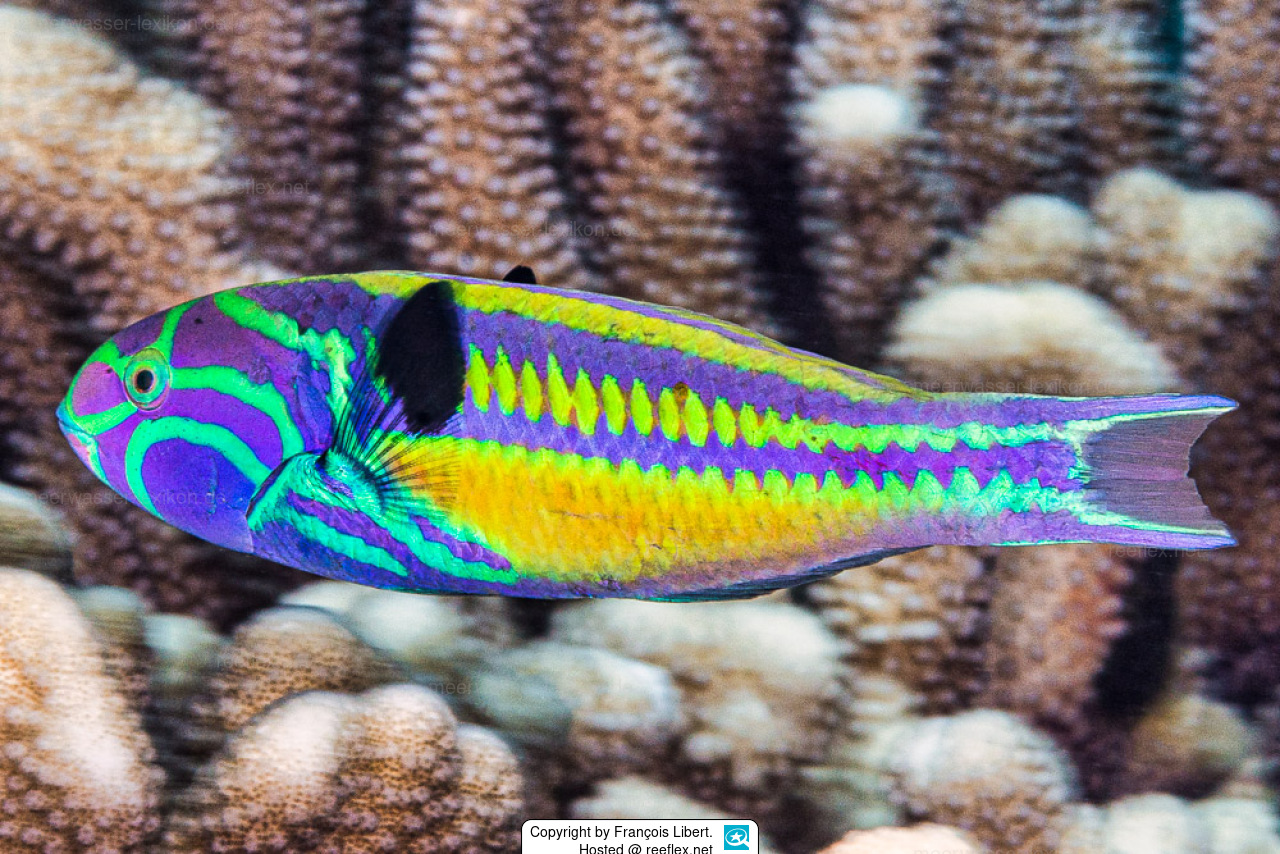Info
(Lay & Bennett, 1839)
Found in clear outer lagoon reefs and exposed seaward reefs. Abundant in shallow exposed areas with surge channels, with gutters, large Acropora plates and algae bottom.
Synonyms:
Scarus quinquevittatus Lay & Bennett, 1839
Thalassoma quinquevittata (Lay & Bennett, 1839)
Thalassoma quinquevittatus (Lay & Bennett, 1839)
Thalassoma quiquivittatum (Lay & Bennett, 1839)
Thalassoma qunquevittatum (Lay & Bennett, 1839)
Jumping guard
A jumping guard prevents (nocturnal) fish from jumping out.
Wrasses, blennies, hawkfishs and gobies jump out of an unprotected tank in fright if their night rest is disturbed, unfortunately these jumpers are found dried up in the morning on carpets, glass edges or later behind the tank.
https://www.korallenriff.de/en/article/1925_5_Jump_Protection_Solutions_for_Fish_in_the_Aquarium__5_Net_Covers.html
A small night light also helps, as it provides the fish with a means of orientation in the dark!
Found in clear outer lagoon reefs and exposed seaward reefs. Abundant in shallow exposed areas with surge channels, with gutters, large Acropora plates and algae bottom.
Synonyms:
Scarus quinquevittatus Lay & Bennett, 1839
Thalassoma quinquevittata (Lay & Bennett, 1839)
Thalassoma quinquevittatus (Lay & Bennett, 1839)
Thalassoma quiquivittatum (Lay & Bennett, 1839)
Thalassoma qunquevittatum (Lay & Bennett, 1839)
Jumping guard
A jumping guard prevents (nocturnal) fish from jumping out.
Wrasses, blennies, hawkfishs and gobies jump out of an unprotected tank in fright if their night rest is disturbed, unfortunately these jumpers are found dried up in the morning on carpets, glass edges or later behind the tank.
https://www.korallenriff.de/en/article/1925_5_Jump_Protection_Solutions_for_Fish_in_the_Aquarium__5_Net_Covers.html
A small night light also helps, as it provides the fish with a means of orientation in the dark!







 François Libert, Frankreich
François Libert, Frankreich



































